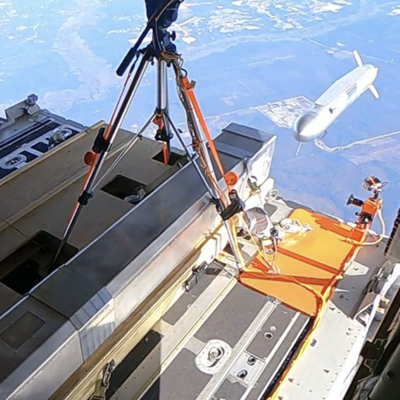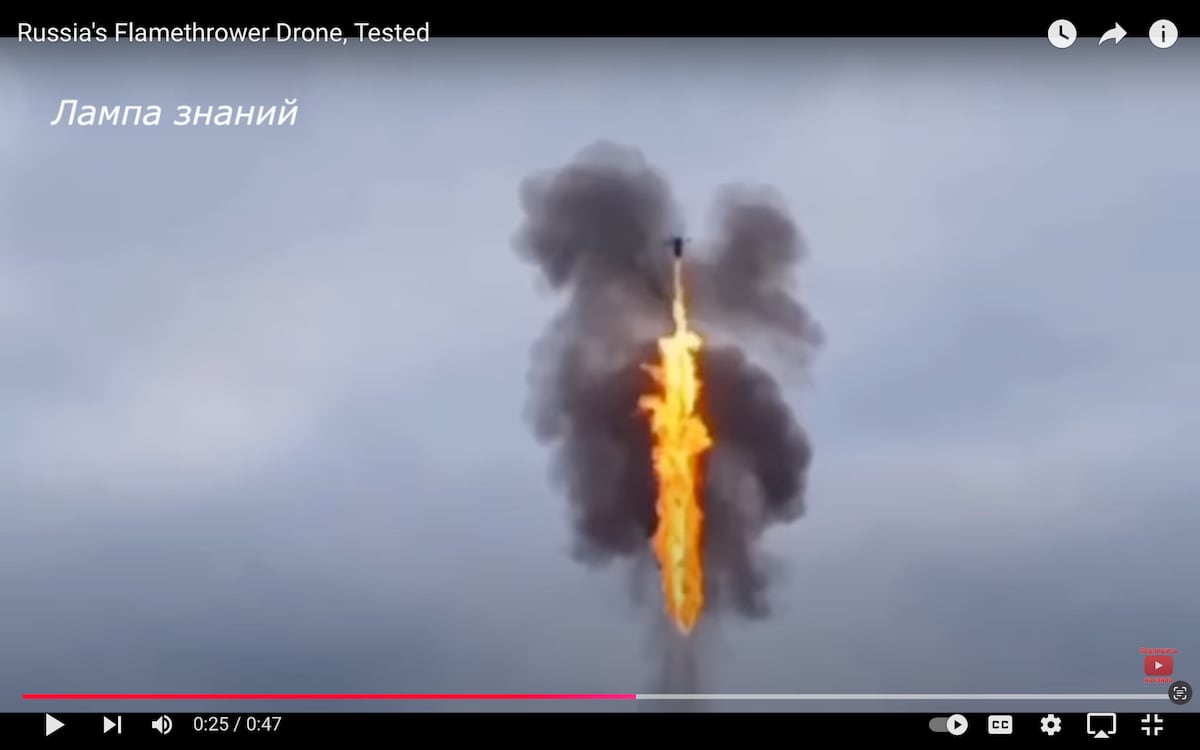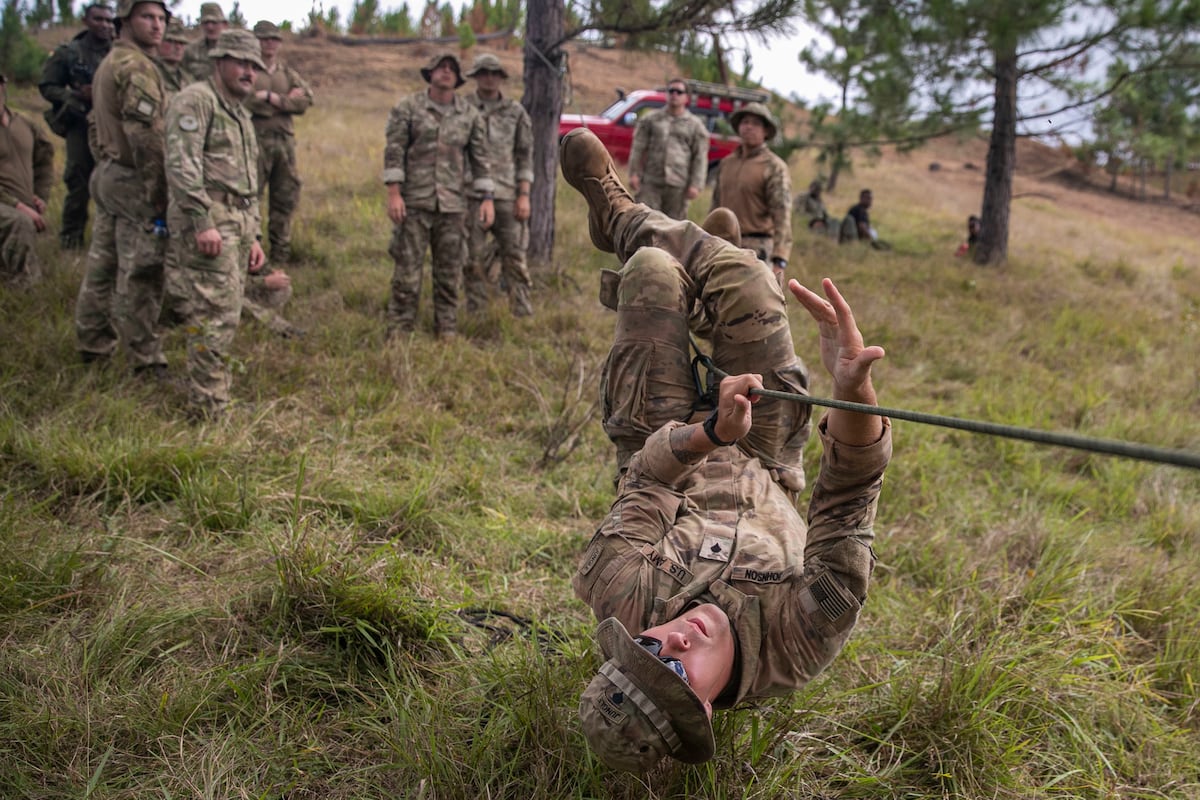An upcoming test-firing of a small cruise missile is a step toward filling a rising need for U.S. special operators—and perhaps allies around the globe.
Sometime this fall, Leidos aims to launch its under-development Black Arrow missile from an AC-130J furnished by U.S. Special Operations Command, building on hitherto unrevealed captive-carry and safe-separation tests conducted last December, according to a company statement.
The effort by Leidos, better known for its weapons components than entire missiles, shows how digital technologies and open, modular design are enabling new entrants to the missile market and clearing a path toward cheaper, easier-to-built weapons.
The Black Arrow is designed to answer SOCOM’s 2021 call for a small air-to-ground cruise missile that can fly about 400 nautical miles and hit targets even when GPS is down. SOCOM said it needed such a missile because more advanced air defense systems were putting U.S. forces at greater risk in more places.
The same can be said of many partner militaries, such as Ukraine. In August, Digital Transformation Minister Mykhailo Fedorov invited inventors and companies to help the country develop new missiles.
“What are the next challenges where we need your help?” Fedorov said at the GLOBSEC forum in Prague. “How to invent effective laser guidance, how to develop AI for swarms of drones, how to produce Ukrainian HIMARS, how to develop cheap Ukrainian missiles to shoot down Shaheds?”
But creating cruise missiles has generally required more money and time than outfits like SOCOM or Ukraine have to spend.
SOCOM hired Leidos through a Cooperative Research and Development Agreement, or CRADA, that allowed the development process to move unusually quickly, a Leidos official told Defense One. The company spent more of its own money than usual on research and development, while the command furnished a test aircraft, range, and other resources. Leidos trimmed its own costs by using digital engineering techniques such as high-data modeling and digital twinning.
“We’re circumventing the normal development time that can take a decade or more by accomplishing a lot of the work under the CRADA, and a key element of that is our reliance and confidence that we have on the digital models,” the Leidos official said. “We use [advanced digital modeling] in our hardware loop facility so that we can run literally hundreds of thousands and millions of trajectories and scenarios to make sure that not only do we fly well at the heart of the envelope that we understand, we’ve evaluated the corners of the fight envelope as well.”
But Leidos is not the only new entrant in the small-missile market. In September, Anduril announced its own family of small cruise missiles. And Y Combinator, the startup accelerator known for boosting small digital companies at their earliest stages, announced in August that they were backing Ares, their first cruise missile company.
Leidos says they did extra work to ensure that their missile actually functions with the aircraft that the military wants to use. That digital modeling was key not just to designing the missile but also making sure that it could integrate with the NSWC Battle Management System and the AC-130. That’s why the captive-carry and safe-separation tests were so important. With that done, they hope to move forward much more quickly with flight tests than is the norm for cruise missiles.
“And now, when we go in the fall, instead of an incremental buildup and test, we will move directly to a control-guided flight test relying on the fidelity and confidence that we have in the digital model,” the official said.
Digital modeling also makes it easier to modify the missile for more platforms, the official said. For example, a 400-mile cruise missile would give the slow, vulnerable MQ-9 drone more relevance in a high-end fight.
“It’s 80 inches long, nine inches in diameter. So you could carry eight of these on an MQ-9, for instance. So now you start thinking about these MQ-9s that are vulnerable to enemy air defenses,” said the official. “It’s sort of like a loaf of bread. It has various subsections that…we could lengthen the missile. We could shorten it. We could put a different front in it, on it. We could alter the body length.”
That could be a big huge advantage for militaries like Ukraine or other partners that are struggling to obtain and operate advanced fighter jets like F-16s but might be able to get other aircraft.
“You could put this on a C-138 that the Philippines have, all the hundreds of C-130s that our allied partners have, or other transport aircraft like the C-27. So the idea is simple, rapid integration.”
Read the full article here








Leave a Reply